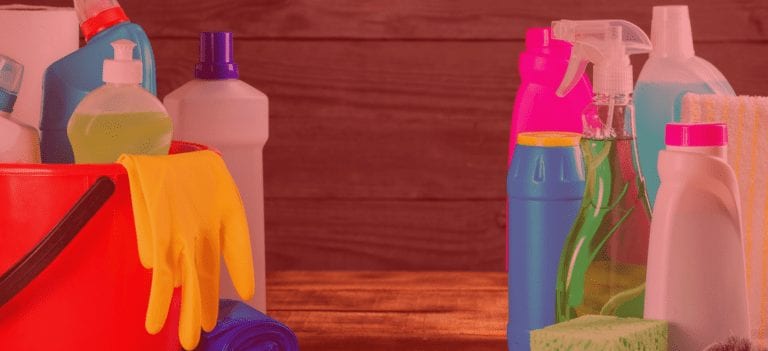Hazardous Household Products: Caution When Spring Cleaning

It’s a frightful reality that many common household products can be dangerous when consumed. The increasing reports of laundry detergent packet/pod ingestion signifies a harmful new trend. Many parents are learning that they need to be hyper-aware of the household substances that can be detrimental to the health of the family.
Laundry packets are a type of cleaning product that can look a lot like candy. As a result, children may be tempted to try consuming these or other household products. What can parents do to improve child safety when hazardous household products are in abundance—such as during spring cleaning—and how can they respond if such substances are ingested?
Most Dangerous Household Products
There are a number of household products that may be harmful or fatal to humans when swallowed. With some products, anywhere from a taste to a teaspoon might be able to kill an adult of average size. Adults and caregivers need to be aware of commonly occurring yet potentially hazardous household products for children that may be lurking on their shelves or inside the cabinets—and keep them well out of reach. At the top of the list of dangerous household products are:
- Air fresheners
- Ammonia
- Bleach
- Carpet and upholstery shampoo
- Dishwasher detergent
- Drain cleaner
- Furniture polish
- Oven cleaner
- Mold and mildew cleaner
- Laundry room products
Concentrated laundry products are one of the most dangerous products for children. Laundry products, soaps, cleaning agents and detergents should be kept under lock and key. Never keep hazardous products on shelves or in cabinets within a child’s reach.
Also keep in mind that ingestion is not the only hazard when chemical cleaning products are being used. Inhalation is also a concern, as many of these products contain ingredients and harmful chemicals that can cause health problems. Always ensure you have adequate ventilation to dissipate fumes, and remember to take breaks frequently to get some fresh air. Never mix bleach or bleach-containing products with another containing ammonia. Adults should read labels on all current and new products to learn which ones require extra vigilance.
Symptoms of Poisoning
Some products can be harmful when ingested, inhaled, or when coming in contact with the surface of the skin. Signs of severe gastrointestinal symptoms may occur when household products are swallowed. An individual who ingests a harmful household product may develop symptoms including:
- Repeated vomiting
- Vomiting blood
- Swelling of lips or tongue
- Abdominal pain
- Blood in stools
- Trouble breathing
- Confusion
- Seizures
- Abnormal skin coloring.
Adults should not attempt to eliminate the substance from an individual’s body without being directed by a medical professional or poison expert. Call for professional guidance (see below) and attempt to identify the substance if the affected individual cannot do so.
Act Quickly When Household Products Are Ingested
If a potentially harmful household product is consumed, urgent treatment is necessary. Without treatment, individuals may suffer from brain or tissue damage in addition to other serious consequences. An adult or caregiver should contact emergency services for assistance immediately. Treatment depends on the type of product consumed, so it is critical to speak with a poison expert and follow directions provided.
In the case of an emergency, call the America Association of Poison Control Centers’ Poison Help line at 1-800-222-1222. You can also be prepared by finding your State Poison Control Center at www.aapcc.org/centers.
Spring cleaning can have a number of mental and physical health benefits, but it is incredibly important to be aware of the hazardous products often involved—especially when there are young children in the house.
